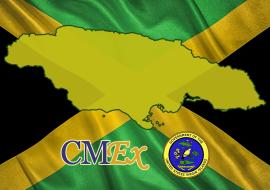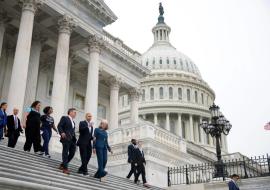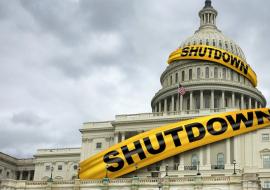Spending on Weekly Travel in the U.S. Takes a Nosedive

Weekly travel spending in the U.S. has fallen a whopping 85 percent from the same point a year ago, according to figures prepared for U.S. Travel by the analytics firm Tourism Economics and quoted by The Weekly Journal.
That puts the economy squarely on pace to lose 5.9 million travel-related jobs by the end of April, as had been predicted earlier—more than a third of the travel-supported workforce.
The tourism fallout is clear in Puerto Rico, with hotels operating with single-digit occupancy rates, while many airlines have severely cut their operations around the world, including to the Caribbean.
In Puerto Rico, tourism and its related sectors, are an important part of the local economy. In fact, tourism is the second largest export sector of the local economy after manufacturing.
All but shut down by the coronavirus pandemic, the U.S. travel industry is calling on Congress to protect the 15.8 million Americans whose livelihoods depend on travel.
At the top of the list: adding $600 billion to the Paycheck Protection Program (PPP) and expanding eligibility to small businesses that were previously left out; and ensuring loan forgiveness can cover both payroll and other operating expenses during the shutdown.
A key example of small businesses that were unintentionally excluded from the PPP under the CARES Act: local and regional destination marketing organizations (DMOs), whose work is absolutely crucial to driving travel and tourism business in every pocket of the country.
The policy measures proposed by the U.S. Travel Association include:
• Expand eligibility for the Payroll Protection Program (PPP) to DMOs that are classified as 501(c)(6) non-profits or “political subdivisions” of their local governments, as well as to small businesses (fewer than 500 employees) that operate multiple locations.
• Appropriate an additional $600 billion for the PPP and extend the coverage period through December 2020. The PPP is currently slated to expire on June 30—the economy will not realistically be in recovery by then—and the initial round of funding is expected to run out in just a few weeks.
• Revise the PPP maximum loan calculation to 8x a business’ monthly outlays, and allow it to cover both payroll and non-payroll expenses. Currently the formula is 2.5x and covers payroll only, not other expenses—inadequate for immediate needs.
• Provide loan forgiveness to large businesses under the Exchange Stabilization Fund (ESF), rather than just loan guarantees, and clarify ESF eligibility for 501(c)(6) non-profits.
• Increase Economic Injury Disaster Loan (EIDL) funding to $50 billion, raise the loan cap from $500,000 to $10 million, and allow a second EIDL if a business is still unable to meet its ordinary expenses.














